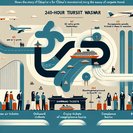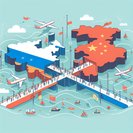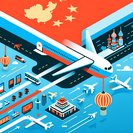
China’s latest visa-waiver drive is paying visible dividends. According to data released on 26 November by Xinhua, inbound and outbound traveller volumes at Beijing’s ports hit 19.35 million as of 23 November—an 18 % jump on the same period last year. Foreign nationals accounted for 5.78 million of those crossings, up more than 35 %, and roughly 60 % entered on either a visa-exemption or a temporary entry permit.
The impact is not limited to the capital. Fujian’s Xiamen port processed 5.4 million passengers by mid-November, including a record 960 000 foreigners. Provincial tourism officials credit the increase to the expansion of China’s unilateral 30-day visa-free scheme and the broader 240-hour transit-waiver that now covers 65 entry points nationwide.
![China’s Visa-Waiver Push Drives 35 % Surge in Foreign Arrivals]()
For multinationals, the uptick comes at a crucial moment. Business-development teams report shorter lead-times for urgent trips, while HR managers say visa-free access is helping to revive stalled expatriate assignments by making family reconnaissance visits easier. Hotels in Shanghai and Shenzhen are already quoting weekday occupancy rates above 2019 levels, driven largely by European and Latin American guests who no longer need to lodge paperwork weeks in advance.
Policy advisers, however, warn that pent-up demand could outstrip processing capacity at secondary airports if infrastructure investment lags. They urge corporate travel planners to book early-morning flights where queues remain shorter and to check port-specific rules on permitted prefecture travel during the 240-hour stay.
If Beijing maintains momentum—and signals that more countries will be added to the waiver list in 2026—analysts expect China to reclaim its pre-pandemic share of Asia-Pacific business-travel flows within 12 months.
The impact is not limited to the capital. Fujian’s Xiamen port processed 5.4 million passengers by mid-November, including a record 960 000 foreigners. Provincial tourism officials credit the increase to the expansion of China’s unilateral 30-day visa-free scheme and the broader 240-hour transit-waiver that now covers 65 entry points nationwide.

For multinationals, the uptick comes at a crucial moment. Business-development teams report shorter lead-times for urgent trips, while HR managers say visa-free access is helping to revive stalled expatriate assignments by making family reconnaissance visits easier. Hotels in Shanghai and Shenzhen are already quoting weekday occupancy rates above 2019 levels, driven largely by European and Latin American guests who no longer need to lodge paperwork weeks in advance.
Policy advisers, however, warn that pent-up demand could outstrip processing capacity at secondary airports if infrastructure investment lags. They urge corporate travel planners to book early-morning flights where queues remain shorter and to check port-specific rules on permitted prefecture travel during the 240-hour stay.
If Beijing maintains momentum—and signals that more countries will be added to the waiver list in 2026—analysts expect China to reclaim its pre-pandemic share of Asia-Pacific business-travel flows within 12 months.










